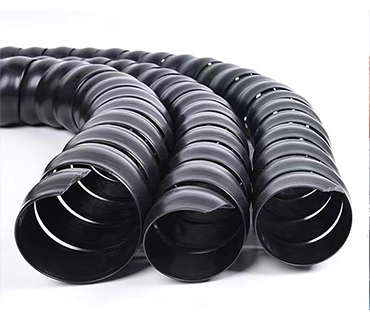In life, safety is the most important thing, so some protective materials have gradually emerged in our lives, such as some high temperature sleeves, which can be widely used in various industries.
1. Uses of high temperature sleeve
The synthesis of special high-temperature resistant materials determines that high temperature sleeves have many characteristics that are difficult to replace by other similar materials: high temperature resistance, insulation and heat preservation performance, flame retardancy, electrical insulation performance, chemical stability, climate aging resistance, cold resistance, water resistance, oil resistance, ozone resistance, voltage resistance, arc resistance, and corona resistance, especially in terms of safety and environmental protection. They are the best alternative products for harmful products such as asbestos.
The buckle-type high-temperature sleeve is mainly used in clinical medicine, pharmaceutical fluid transfer, biopharmaceuticals, medical scientific research, small household appliances, medical analytical instruments, respiratory machines, food and beverage transfer, dairy products, beer, peristaltic pumps, veterinary medicine and pharmaceuticals, and chemical industries!
2. Understanding high temperature sleeve
(1) Safe and environmental-friendly, protecting workers' health
Alkali-free glass fiber itself has strong tensile force, is not easily broken, is resistant to vulcanization, emits no smoke, halogens or toxins, is non-combustible in pure oxygen, and has good insulation. After solidification with organic silicone, its safety and environmental protection properties are further enhanced, effectively protecting the health of workers and reducing the incidence of occupational diseases. It is not as harmful to the human body and the environment as asbestos products.
(2) Superior high-temperature resistance performance
The organic silicone structure on the surface of high temperature sleeves contains "organic groups". This special composition and molecular structure enable it to combine the characteristics of organic substances with the functions of inorganic substances. Compared with other polymer materials, its most outstanding feature is high-temperature resistance. With silicon-oxygen (Si-O) bond as the main chain structure, the bond energy of the C-C bond is 82.6 kcal/molecule, and the bond energy of the Si-O bond in organic silicon is 121 kcal/molecule, so its thermal stability is high, and the chemical bond of the molecule does not break or decompose under high temperature (or radiation). Organic silicon is not only heat-resistant, but also cold-resistant, and can be used over a wide temperature range.
(3) Anti-splash and multiple Protection
In the metallurgical industry, the medium temperature inside the electric furnace is extremely high, which is easy to form high-temperature splashing (the same is true for the welding industry). After cooling and solidifying, it forms slag on the pipeline or cable, hardens the rubber outside the pipeline or cable, and ultimately becomes brittle and ruptures, causing damage to unprotected equipment and cables. Multiple layers of high temperature sleeves coated with silicone can achieve multiple safety protection, with the highest temperature resistance up to 1300 degrees Celsius, effectively blocking the splashing of molten iron, copper, aluminum and other high-temperature molten materials, and preventing surrounding cables and equipment from being damaged.
(4) Flame retardant, reducing the incidence and spread of fires
If the medium conveyed in the pipeline is flammable or toxic, leakage can easily cause fires or casualties; cables often ignite due to local high temperatures; high temperature sleeves are woven with highly temperature-resistant glass fiber and coated with silicone containing appropriate flame retardants and other special materials, making it excellent in flame retardancy. Even if a fire occurs, it can prevent the spread of the fire and can protect the integrity of the internal pipeline for a long time, providing sufficient time for the rescue of important information such as data and materials.

















